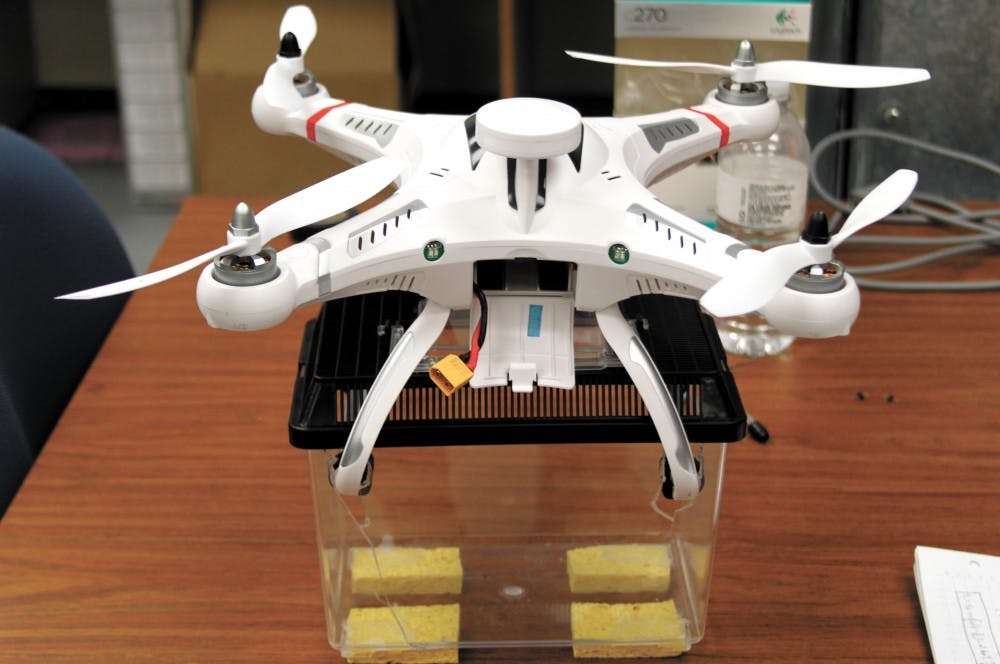Students create drones controlled by hand gestures

Six Central Michigan students have created an unmanned aerial vehicle that can be controlled using hand gestures. The project was started in fall 2014.
Yoda did not make Luke Skywalker's X-Wing fly out of the murky swamps of Dagobah with a wave of his hand. George Lucas achieved that effect with a puppet, props, pulleys and Computer Generated Imagery.
Six Central Michigan University students are mimicking the power of the force as they develop an unmanned aerial vehicle drone that can be controlled using hand signals.
"The project we set out to create is a semi-autonomous, gesture-controlled UAV transportation system for objects near two pounds,” said Rockford senior Andrew Gigowski. "It is almost 100 percent complete at this time."
The students taught a camera to recognize hand gestures such as thumbs up and thumbs down command actions for take off and landing. The drone has also been modified to carry items less than two pounds.
Swartz Creek senior Aaron Yoon said even though the project is near completion, the design has more ground to cover.
"The original idea was to be able to pick up objects," Yoon said. "We are in the youth of this endeavor. The project still has room for expansion."
The students started the project in fall 2014 for a practical engineering class called Senior Design. The research and experimentation is conducted under the guidance of the students' advise, Engineering and Technology Faculty Kumar Yelamarthi.
"This is all done for students," Yelamarthi said. "One of the (primary) things I do is engage students, show them the latest technology and the skills that we teach in class."
Gigowski said the foundation for the project was inspired by a contact Yelamarthi has, who works for Intel, one of the largest semiconductor chip corporations in the world. The contact suggested they could apply a new technology called perceptual computing to their research and create a product.
"One application could be in the home of a disabled person who may not be able to get up and walk to find something themselves," Gigowski said. "Another use would be in the industrial setting, moving tools back and forth."
Yelamarthi also suggested the modified UAV design would be useful in disaster relief situations and for transporting supplies across debris. He said making the drone gesture-controlled was necessary so that the design would be easy to use for everyone.
"If you are not familiar with flying a drone, the first time you try to fly it you will crash it; I bet you on that," Yelamarthi said.



